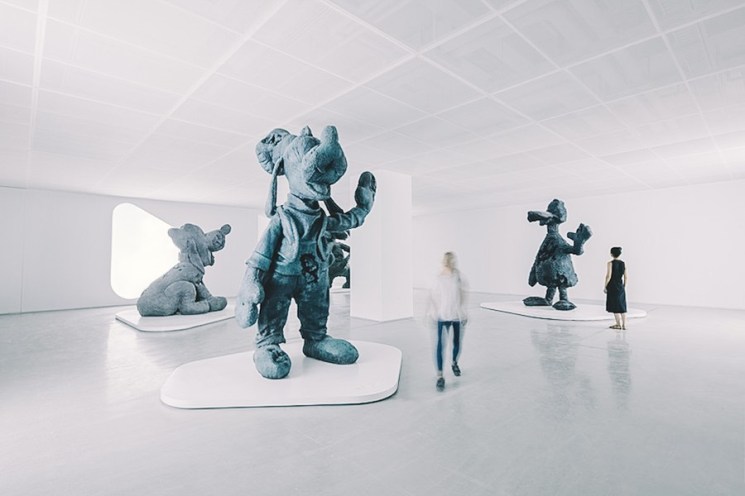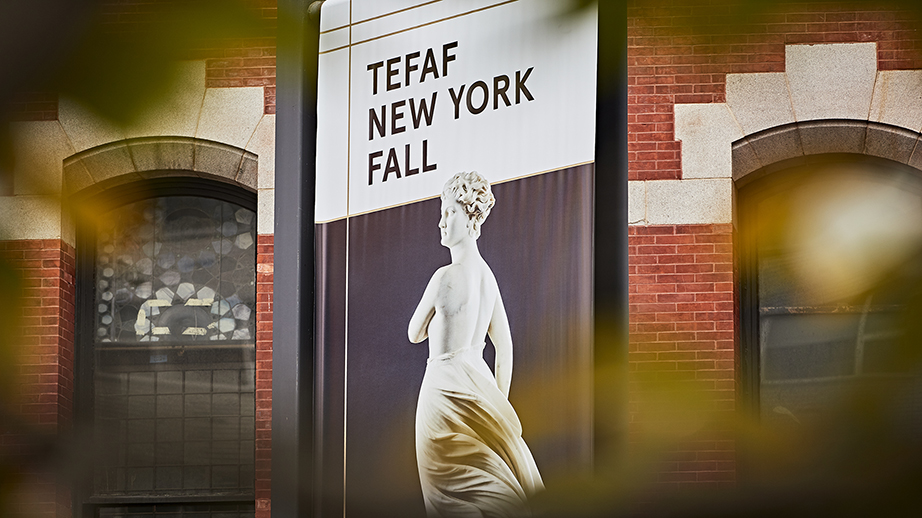Away from the champagne flutes and murmurings in Romance languages that accompany the Picassos, Miros, and Chagalls lining the walls of The European Fine Art Fair (TEFAF) at the Park Avenue Armory, a crowd retired to the Veteran’s Room to address a pressing question for today’s contemporary art scene: what should be made of China’s markets in the current climate?
For global art dealers and collectors, familiar glitz and prestige remains in Upper East Side gatherings like these, but in many ways, momentum has already shifted eastward. In terms of sheer size, China overtook the US as the world’s largest art and antique market in 2011, and now, the museum landscape is also changing. The era of Western institutions shipping second-rate expressionist exhibitions to China is long over now that Beijing and Shanghai occupy a prominent position in the plans — and potential profits — of international museums and galleries.
Proof of this new emphasis is everywhere these days and runs far deeper than the initial spate of overseas galleries that came to China in the mid-2000s to cash in on a class of newly-minted millionaires. If the first wave, led by Gallery Continua’s Beijing venture in 2004, was mainly a commercial pilgrimage, the second one is far more collaborative, diplomatic, and long-term in its approach. The past month alone has seen the opening of the Centre Pompidou x West Bund Museum Project, the arrival of teamLab’s first permanent space in China (the second will open in Macao in January of 2020), and the announcement of a landmark three-way collaboration between the Yuz Museum Shanghai, the Los Angeles County Museum of Art, and Qatar Museums.

Centre Pompidou x West Bund Museum opened on November 8. Image: Centre Pompidou x West Bund Museum. Project Sunset aerial view © All rights reserved
A combination of public and private Chinese interests is recalibrating the global art order, with Shanghai pushed increasingly into the spotlight. The seven-mile-long cultural corridor along the banks of the city’s Huangpu River evidences this fusion, as a government-owned development group has pumped billions of RMB into this area that now holds several international art fairs annually, including the West Bund Art & Design Fair, which hosts roughly 100 of the world’s most prestigious galleries.
“There is great excitement on the side of private museums, as can be seen in Shanghai,” said Kejia Wu, a professor at Sotheby’s Institute New York and a panelist at the TEFAF event. “So much is happening at the moment. What is taking place is a major structural shift within the Chinese art market, and we will see more private museums putting on more shows of international artists.”
From showings of American artists Daniel Arsham and Matthew Barney at the HOW Shanghai and UCCA Beijing, respectively, to exhibitions of big British names Anish Kapoor and Marc Quinn at the Central Academy of Fine Art, 2019 has been a blockbuster year for international contemporary artists in China. Much has been written about the emerging class of culturally voracious Chinese consumers who are keen on experiencing New York and London’s finest artworks on their doorstep, but satisfying the appetites of these so-called “art-lennials” is only part of the reason for these exhibitions.

International artists are in high demand in China, as evidenced by Daniel Arsham’s first major Chinese which was held at Shanghai’s HOW Museums Fall 2019 at. Image: HOW
For starters, individual Chinese collectors have institutionalized their collections by creating museums, making world-class, privately-held art available to the public for the cost of an admission ticket. Equally important is a merging of interests between private museums and US and European galleries, the former being desperate to stage trendy international artists while the latter hopes to attract buyer interest without paying the 20 percent tax levied on art sales in China.
“The private museums are desperate to break even, and big international galleries want to sell art,” said Wu, “so blue-chip galleries are funding the big blockbuster art shows in Shanghai and partnering with them… it is a win-win situation.” This is a popular expression in China, though it’s usually more of a euphemism. Not in this case.
By the Ministry of Culture’s most recent assessments, there are 1,600 private museums spread across China, with the addition of state museums bringing the total to more than 5,000: a staggering development for a country that didn’t begin building museums in earnest until the 1990s. By Wu’s own admission, it’s unlikely many will outlast the next decade, but the fact “people are so much in love with international artists and trying to minimize the exposure to Chinese artists,” will see this trend continue for a good while yet.
For the insider-only crowd that packed the Veteran’s Room at TEFAF and spilled onto its hardwood floors, it wasn’t surprising to learn that collaborations between Chinese museums and Western galleries were only just scratching the surface.



